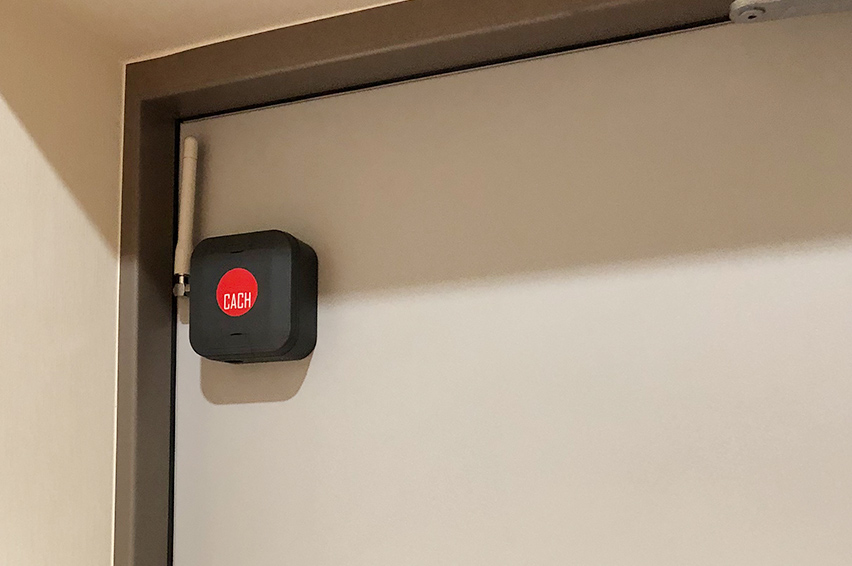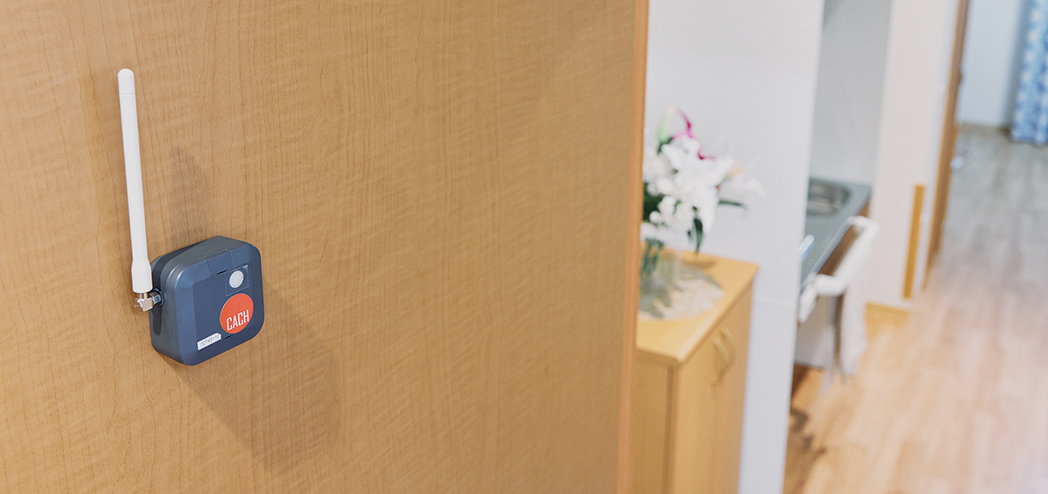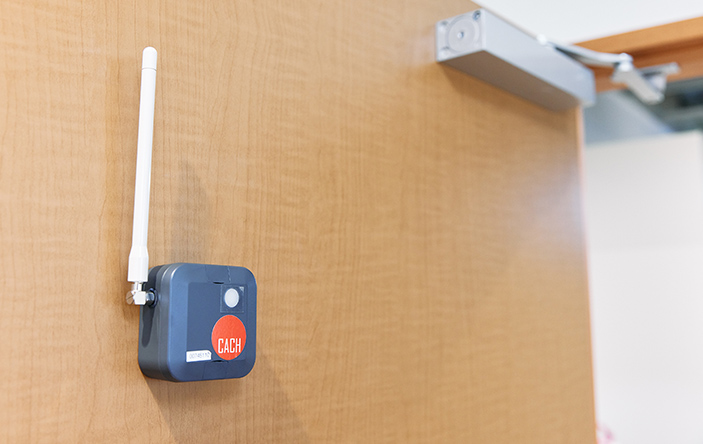Case
This system keeps track of whether doors in every room are opened or closed, and of the safety of the entire facility for more reliable operations. Built-in batteries, communications devices, and magnets make it easy to put in without complicated IT settings or installation tasks, adding AI-controlled, highly-accurate door detection capability in a flash.

On-Site Testing
AI Door Open-Close Detection System
Future Care Lab in Japan engaged in testing and evaluation of the AI Door Open-Close Detection System with an eye to improving the precision and efficiency of user safety checks at care facilities through technology. Test case evaluations confirmed open-close detection accuracy across several hundred door operation tests. The development company worked hard to boost precision in order to make it to the on-site verification stage. We were convinced that full-scale introduction would result in a safe, reliable safety detection system even under pandemic conditions.


From
the Development Company
Our company provides IoT solutions for the construction, infrastructure, and residential management sectors. In working with one of our residential management company clients, we learned that they were looking for an easy-install system that would detect open and closed doors with a high degree of accuracy. We started collecting and analyzing data, and then went through a host of different development processes to put together and make commercially available a system that would meet that need.
Future Care Lab in Japan (“the Lab”) approached us to ask whether our AI Door Open-Close Detection System could be used for safety monitoring in senior residential facilities. We then realized that our solution might help solve some of the problems that nursing care settings face. We immediately ran some basic tests at the Lab, and once we realized just how serious the need was, set about discussing and developing an ideal solution together. We’ve recently begun conducting on-site testing at multiple Sompo Care senior residential facilities with nursing care services. Because the people at the Lab take such an earnest approach to on-site challenges and put resident safety and peace of mind first when running their tests and evaluations, we were inspired to take our efforts up a notch and give them an even more fully-featured system.
Many companies currently use systems like these to manage vacant properties, but the Lab is currently doing on-site testing at multiple facilities with an eye to applying them to senior residential facilities with nursing care services. If we end up being able to use the system, we’re confident that it will help improve safety and streamline work operations at nursing care facilities as well. Ultimately, we hope to roll out the product to any nursing care facility facing similar challenges.

From
Future Care Lab in Japan
Senior residential facilities with nursing care services are required to perform daily safety checks, but most of them do this manually using meal history and similar means—and oversights still occur. We wanted to bring in technology as a way to improve safety and streamline tasks to help facilities overcome these issues, so we selected and began testing and evaluating the AI Door Open-Close Detection System with safety confirmation sensors capable of accurately detecting whether the doors to residents’ rooms were open or closed.
The system detects whether doors are open or closed, but since they can’t tell who opened or closed the door, they still didn’t produce 100% accurate safety checks. We then looked at how much we could improve accuracy over manual checks, which required that we put together an operations procedure. We used Lab facilities to run door open-close tests several hundred times, testing and evaluating detailed data on the angle of the opening, speed, and more. We then incorporated expert advice in order to estimate accuracy upon introduction. We were grateful to the development company for the way they adjusted system accuracy and earnestly responded to our requests and questions.
We’re currently testing and evaluating the product at multiple facilities in preparation for a full-scale introduction. The Lab discussed new operating procedures with facilities in conjunction with evaluating the technologies introduced to facilities. This approach has increased the time to full-scale rollout, and our involvement in this project has reminded us just how difficult the operations side can be.
Interviews based on information current as of September 2021.
OTHER CASE